-
 Bitcoin
Bitcoin $117500
2.04% -
 Ethereum
Ethereum $3759
3.02% -
 XRP
XRP $3.171
3.30% -
 Tether USDt
Tether USDt $1.000
0.03% -
 BNB
BNB $782.4
2.52% -
 Solana
Solana $187.2
5.62% -
 USDC
USDC $0.0000
0.02% -
 Dogecoin
Dogecoin $0.2380
5.26% -
 TRON
TRON $0.3175
1.07% -
 Cardano
Cardano $0.8227
4.03% -
 Hyperliquid
Hyperliquid $44.50
5.44% -
 Sui
Sui $4.020
10.07% -
 Stellar
Stellar $0.4396
6.28% -
 Chainlink
Chainlink $18.32
4.55% -
 Hedera
Hedera $0.2628
10.71% -
 Bitcoin Cash
Bitcoin Cash $554.8
4.90% -
 Avalanche
Avalanche $24.20
4.60% -
 Litecoin
Litecoin $113.7
2.31% -
 Shiba Inu
Shiba Inu $0.00001413
5.99% -
 UNUS SED LEO
UNUS SED LEO $8.984
0.11% -
 Toncoin
Toncoin $3.326
7.22% -
 Ethena USDe
Ethena USDe $1.001
0.00% -
 Uniswap
Uniswap $10.49
4.56% -
 Polkadot
Polkadot $4.092
4.02% -
 Monero
Monero $326.6
1.30% -
 Dai
Dai $1.000
-0.01% -
 Bitget Token
Bitget Token $4.570
2.49% -
 Pepe
Pepe $0.00001267
5.10% -
 Aave
Aave $297.3
3.10% -
 Cronos
Cronos $0.1344
4.10%
Is Bitcoincoin inflationary or deflationary?
Dogecoin is inflationary, with no supply cap and 10,000 new DOGE mined every minute, leading to continuous supply growth.
Jul 05, 2025 at 07:33 pm
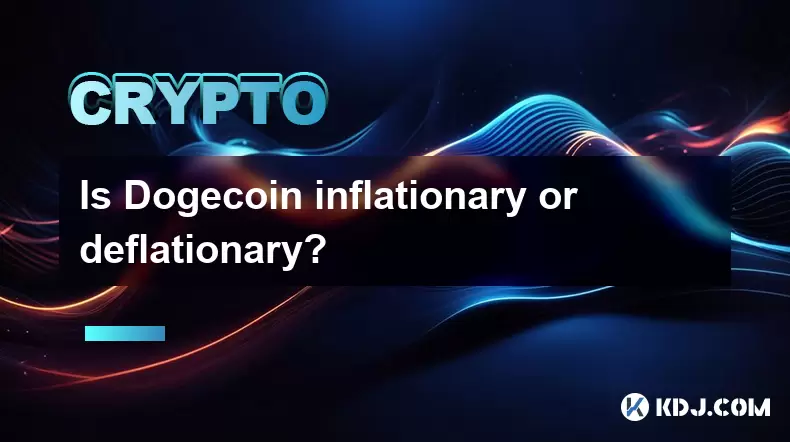
Understanding Inflationary and Deflationary Cryptocurrencies
To determine whether Dogecoin is inflationary or deflationary, it’s crucial to first understand the definitions of these terms within the context of cryptocurrency. An inflationary cryptocurrency is one where the total supply of coins increases over time, often leading to a potential decrease in value per coin due to increased availability. Conversely, a deflationary cryptocurrency has a capped or decreasing supply, which can lead to scarcity and potentially increase the value of each individual coin.
In the case of Dogecoin (DOGE), its supply mechanism plays a pivotal role in classifying it as either inflationary or deflationary. Unlike Bitcoin, which has a hard cap of 21 million coins, Dogecoin does not have a maximum supply limit. This means that new DOGE coins are continuously introduced into circulation through mining, making it an inflationary cryptocurrency by design.
Dogecoin's Supply Model Explained
Dogecoin was initially created as a meme-based cryptocurrency and launched with no fixed supply cap. This decision was intentional and contributes directly to its inflationary nature. The network rewards miners with new DOGE coins at a constant rate—approximately 10,000 DOGE every minute, or 5.04 billion DOGE annually. This consistent issuance of new coins ensures that the supply will continue to grow indefinitely.
While some cryptocurrencies implement mechanisms such as halving events to reduce the rate of new coin creation over time, Dogecoin does not follow this model. Its block reward remains unchanged, ensuring that the rate of inflation stays steady year after year. This distinguishes Dogecoin from other major cryptocurrencies like Bitcoin and Litecoin, which both feature supply caps and decreasing issuance rates.
Impact of Inflation on Dogecoin's Value
One might assume that an ever-increasing supply would inevitably devalue Dogecoin over time. However, the relationship between supply and price isn't always straightforward in the world of digital assets. While inflation typically puts downward pressure on price, other factors such as demand, adoption, utility, and market sentiment can significantly influence DOGE's valuation.
For example, during periods of high interest and social media-driven hype, such as those seen in early 2021 and again in 2024, Dogecoin's price surged despite its inflationary supply model. These spikes were largely driven by retail investors, celebrity endorsements, and speculative trading rather than fundamental scarcity. Therefore, while the inflationary nature of DOGE may pose long-term challenges, short-term dynamics can override this economic principle.
Comparing Dogecoin with Other Major Cryptocurrencies
When comparing Dogecoin to other popular cryptocurrencies, the differences in supply models become apparent. Bitcoin has a strict supply cap of 21 million, making it strongly deflationary once all coins are mined. Ethereum, although not capped traditionally, has implemented measures like EIP-1559 and post-merge staking economics that introduce deflationary pressures through token burning.
In contrast, Dogecoin lacks any such mechanisms to curb supply growth, reinforcing its classification as an inflationary asset. There is no schedule for reducing mining rewards, nor is there a burn mechanism to offset new coin creation. As a result, Dogecoin stands out as one of the few major cryptocurrencies without a built-in supply limit, further emphasizing its unique position in the crypto ecosystem.
Community and Development Influence on Dogecoin's Economics
Despite its inflationary structure, the Dogecoin community continues to support and promote the coin. Developers and enthusiasts argue that a stable and predictable inflation rate fosters broader distribution and usage, especially for microtransactions and tipping systems. Some also believe that the lack of a supply cap encourages accessibility, allowing more people to participate in the network without facing prohibitively high prices.
However, critics point out that without scarcity, Dogecoin may struggle to maintain long-term value retention compared to deflationary alternatives. Yet, due to its strong online presence and cultural significance, DOGE has managed to sustain relevance and even experience significant price rallies. Thus, while its inflationary nature is clear, the broader implications on its future depend heavily on evolving market dynamics and user behavior.
Frequently Asked Questions
What makes a cryptocurrency inflationary?
A cryptocurrency is considered inflationary when new coins are continuously minted, increasing the total supply over time. This contrasts with deflationary models where supply is limited or reduced through mechanisms like burning.
Can Dogecoin ever become deflationary?
Currently, Dogecoin does not have any built-in mechanisms to make it deflationary. For it to change, developers would need to implement features such as a supply cap, halving events, or token burns, which would require broad consensus from the community and miners.
Does Dogecoin's inflation affect its usability as a currency?
Some argue that Dogecoin’s predictable inflation helps maintain its usability for small transactions and tips, as users aren’t discouraged by high per-unit costs. However, others believe that long-term inflation could erode purchasing power, similar to fiat currencies.
How does Dogecoin's inflation rate compare to traditional fiat currencies?
Dogecoin’s annual supply increase is substantial, currently around 4–5% per year, depending on the circulating supply. This is higher than many fiat currencies, such as the U.S. dollar, which typically experiences lower inflation rates due to central bank policies.
Disclaimer:info@kdj.com
The information provided is not trading advice. kdj.com does not assume any responsibility for any investments made based on the information provided in this article. Cryptocurrencies are highly volatile and it is highly recommended that you invest with caution after thorough research!
If you believe that the content used on this website infringes your copyright, please contact us immediately (info@kdj.com) and we will delete it promptly.
- XRP, DOGE, RTX: What's Hot and What's Not in the Crypto World?
- 2025-07-27 03:30:12
- BlockDAG, UNI, POL, Cryptos: Navigating the 2025 Landscape
- 2025-07-27 02:50:12
- Fastex's FTN Collectible Notes: A Fusion of Crypto and Collectibles
- 2025-07-27 02:30:12
- Bitcoin, Institutions, and Resistance: A New Era Dawns
- 2025-07-27 02:30:12
- Bitcoin's Institutional Buying: Fueling the Rally to New Heights?
- 2025-07-27 02:50:12
- Pump.fun's Incentive Campaign: Can it Regain Market Share?
- 2025-07-27 02:55:22
Related knowledge
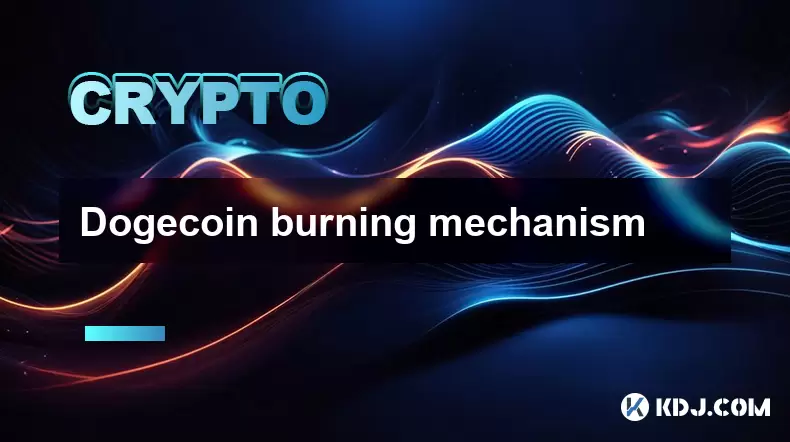
Bitcoincoin burning mechanism
Jul 20,2025 at 09:21pm
What is the Dogecoin burning mechanism?The Dogecoin burning mechanism refers to the process of permanently removing DOGE tokens from circulation by se...

How to earn free Bitcoincoin?
Jul 19,2025 at 10:08pm
What is Dogecoin and Why Earn It?Dogecoin (DOGE) started as a meme-based cryptocurrency in 2013 but has grown into a widely recognized digital asset. ...

Is Coinbase a good wallet for Bitcoincoin?
Jul 19,2025 at 04:42pm
Understanding Coinbase as a Wallet Option for DogecoinWhen considering where to store Dogecoin, Coinbase is often mentioned as a potential option due ...
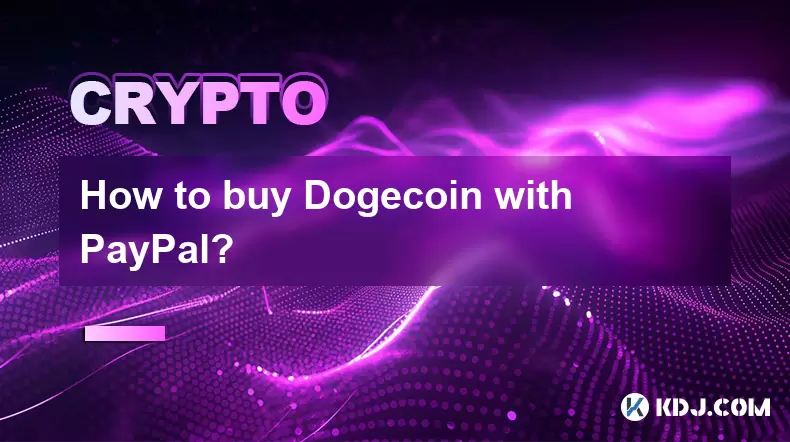
How to buy Bitcoincoin with PayPal?
Jul 23,2025 at 06:57am
Understanding the Basics of Buying DogecoinBefore diving into the process of buying Dogecoin with PayPal, it’s essential to understand what Dogecoin i...
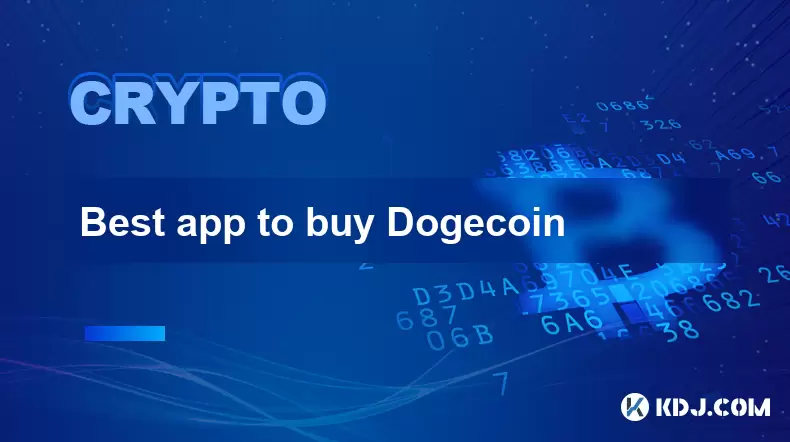
Best app to buy Dogecoin
Jul 23,2025 at 03:08pm
What Is a Cryptocurrency Exchange and How Does It Work?A cryptocurrency exchange is a digital marketplace where users can buy, sell, or trade cryptocu...
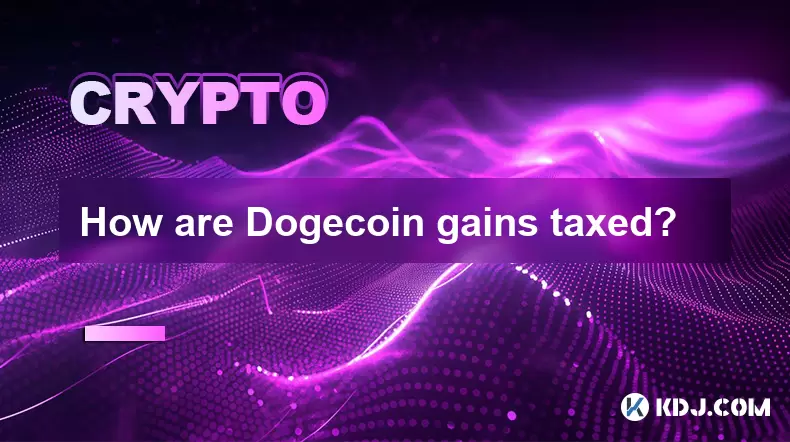
How are Dogecoin gains taxed?
Jul 25,2025 at 07:01am
Understanding the Taxation of Dogecoin GainsWhen it comes to Dogecoin (DOGE), many investors are drawn to its meme-inspired branding and volatile pric...

Bitcoincoin burning mechanism
Jul 20,2025 at 09:21pm
What is the Dogecoin burning mechanism?The Dogecoin burning mechanism refers to the process of permanently removing DOGE tokens from circulation by se...

How to earn free Bitcoincoin?
Jul 19,2025 at 10:08pm
What is Dogecoin and Why Earn It?Dogecoin (DOGE) started as a meme-based cryptocurrency in 2013 but has grown into a widely recognized digital asset. ...

Is Coinbase a good wallet for Bitcoincoin?
Jul 19,2025 at 04:42pm
Understanding Coinbase as a Wallet Option for DogecoinWhen considering where to store Dogecoin, Coinbase is often mentioned as a potential option due ...

How to buy Bitcoincoin with PayPal?
Jul 23,2025 at 06:57am
Understanding the Basics of Buying DogecoinBefore diving into the process of buying Dogecoin with PayPal, it’s essential to understand what Dogecoin i...

Best app to buy Dogecoin
Jul 23,2025 at 03:08pm
What Is a Cryptocurrency Exchange and How Does It Work?A cryptocurrency exchange is a digital marketplace where users can buy, sell, or trade cryptocu...

How are Dogecoin gains taxed?
Jul 25,2025 at 07:01am
Understanding the Taxation of Dogecoin GainsWhen it comes to Dogecoin (DOGE), many investors are drawn to its meme-inspired branding and volatile pric...
See all articles

























































































